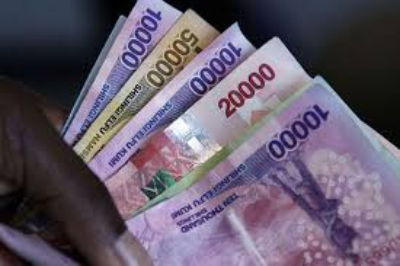In line with the tight monetary policy stance, lending rates in Uganda have exhibited an upward trend with commercial banks raising their prime lending rates by one percentage point on average, according to the State of the Economy Report December 2022.
“Overall, the shilling lending rate rose to 18.4 percent in October 2022 from 18.2 percent in September 2022,” says the report published by the Bank of Uganda [BoU] which is charge of managing inflation in the country by controlling the central bank rate [CBR], which stands at 10 percent.
“The increase in rates is a sign that the effect of tight monetary policy is permeating from the money market through the securities market to the credit market. Notable increases of shilling rates were observed across all major sectors of agriculture, manufacturing, trade, and personal and household loans.”
PSC
According to the report, private sector credit [PSC] growth in the country remained weak and below historical trends as it fell to 10.5 percent year-on-year in the quarter to October 2022, down from 10.8 percent in the quarter to July 2022.
Growth in Shilling loans over the same period increased to 12.2 percent from 9.6 percent, while growth in forex loans declined to 6.3 percent down from 13.8 percent. “Overall, net extensions were largely driven by shilling-denominated loans which outweighed the contraction in foreign currency-denominated loans,” says the report.
Meanwhile, the loan approval rate increased in the quarter to October 2022 to 59.8 percent from 50.4 percent observed in the quarter to July 2022. The approval rates were higher in agriculture [66.5 percent] and building, mortgage, construction & real estate sectors [62.2 percent] and lowest in personal & household loans [6.6 percent].
The BoU report attributes the low approval rate in personal loans to the high risks attached to the sector as majority of the applications are micro consumption loans with limited collateral, adding that credit demand and supply appear to have picked up in the quarter amid tight financial conditions. “This is assessed to be temporary and a reflection of seasonal dynamics for which investors are taking advantage of business opportunities offered by the festive season.”
The report notes that quarterly credit growth entered negative territory for the electricity and water sector averaging minus 12.0 percent, and mining and quarrying sector at minus 15.2 percent, signaling a contraction in investment in capital-intensive sectors.
Asset quality
Commercial banks’ asset quality in the country slightly improved as the ratio of non-performing loans [NPLs] to gross loans fell to 5.2 percent in September 2022 from 5.3 percent in June 2022, says the report.
“Declines of NPLs were observed in the sectors of transport, building, construction & real estate, community, and social and personal & household loans sectors. Going forward, improvements in NPLs could reverse following expiry of the credit relief measures and due to the disruption of economic recovery.”
https://thecooperator.news/bou-cbr-spiked-to-10-percent-as-inflation-rises-again/
Buy your copy of thecooperator magazine from one of our country-wide vending points or an e-copy on emag.thecooperator.news
